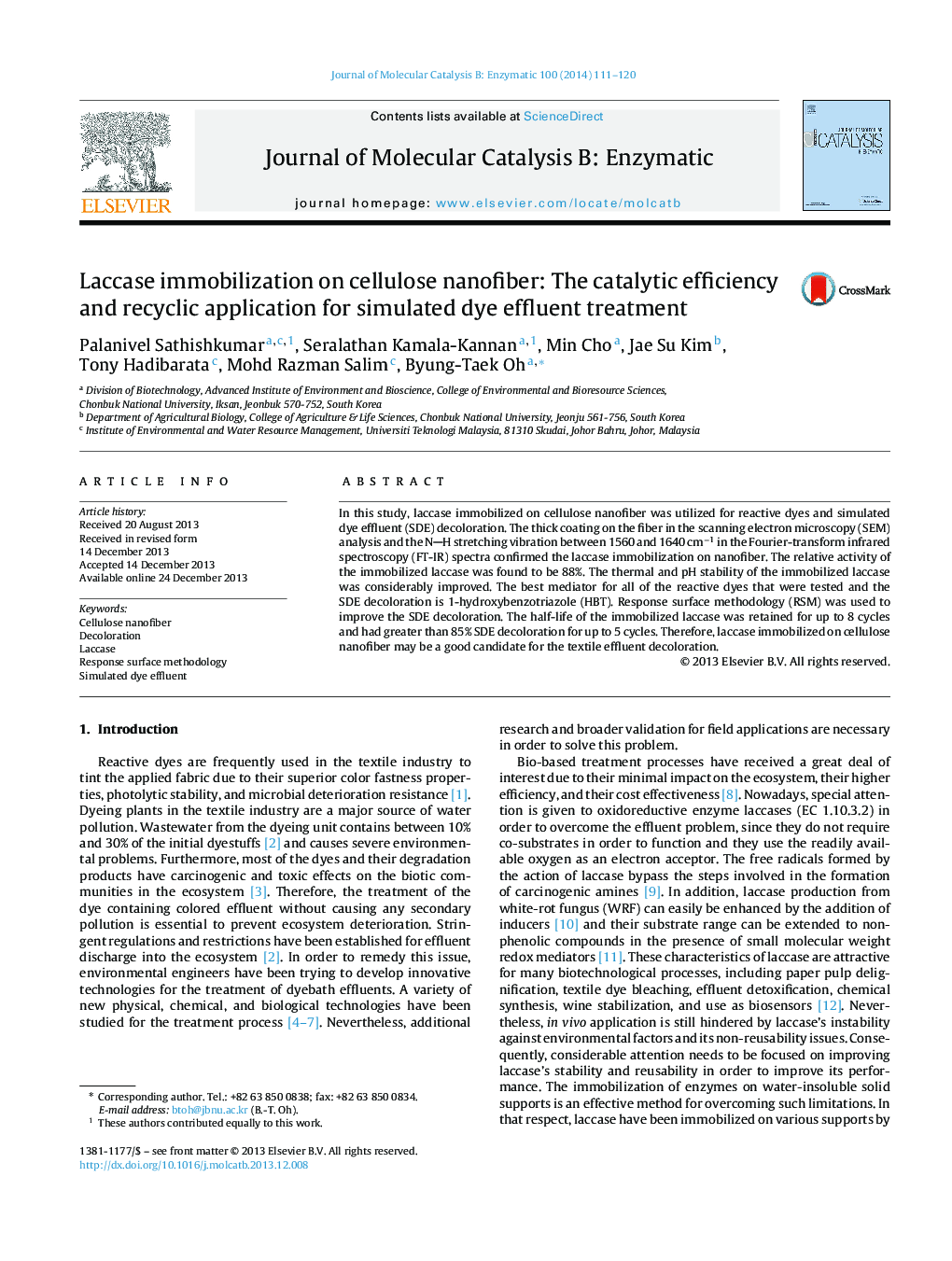| Article ID | Journal | Published Year | Pages | File Type |
|---|---|---|---|---|
| 69772 | Journal of Molecular Catalysis B: Enzymatic | 2014 | 10 Pages |
•The efficiency of laccase-cellulose nanofiber for reactive dyes and simulated dye effluent treatment was investigated.•A band appearing at NH stretching vibrations in FT-IR spectra confirmed laccase attachment on cellulose nanofiber.•HBT acts as a best mediator for laccase mediated SDE bioremediation.•Immobilized laccase had better pH and thermal stability.•Immobilized laccase showed above 85% of SDE decoloration up to 5 recycles.
In this study, laccase immobilized on cellulose nanofiber was utilized for reactive dyes and simulated dye effluent (SDE) decoloration. The thick coating on the fiber in the scanning electron microscopy (SEM) analysis and the NH stretching vibration between 1560 and 1640 cm−1 in the Fourier-transform infrared spectroscopy (FT-IR) spectra confirmed the laccase immobilization on nanofiber. The relative activity of the immobilized laccase was found to be 88%. The thermal and pH stability of the immobilized laccase was considerably improved. The best mediator for all of the reactive dyes that were tested and the SDE decoloration is 1-hydroxybenzotriazole (HBT). Response surface methodology (RSM) was used to improve the SDE decoloration. The half-life of the immobilized laccase was retained for up to 8 cycles and had greater than 85% SDE decoloration for up to 5 cycles. Therefore, laccase immobilized on cellulose nanofiber may be a good candidate for the textile effluent decoloration.
Graphical abstractFigure optionsDownload full-size imageDownload as PowerPoint slide
